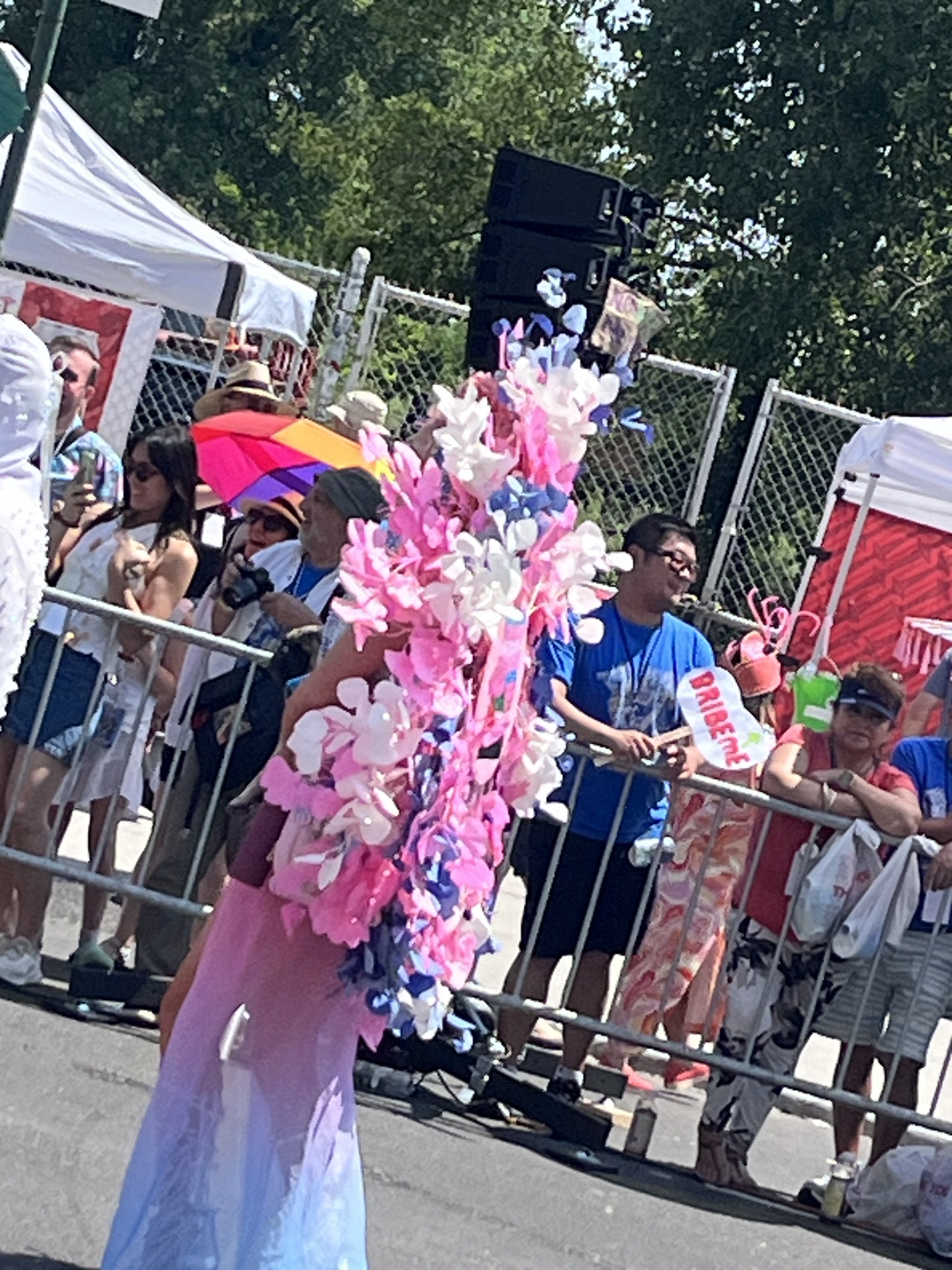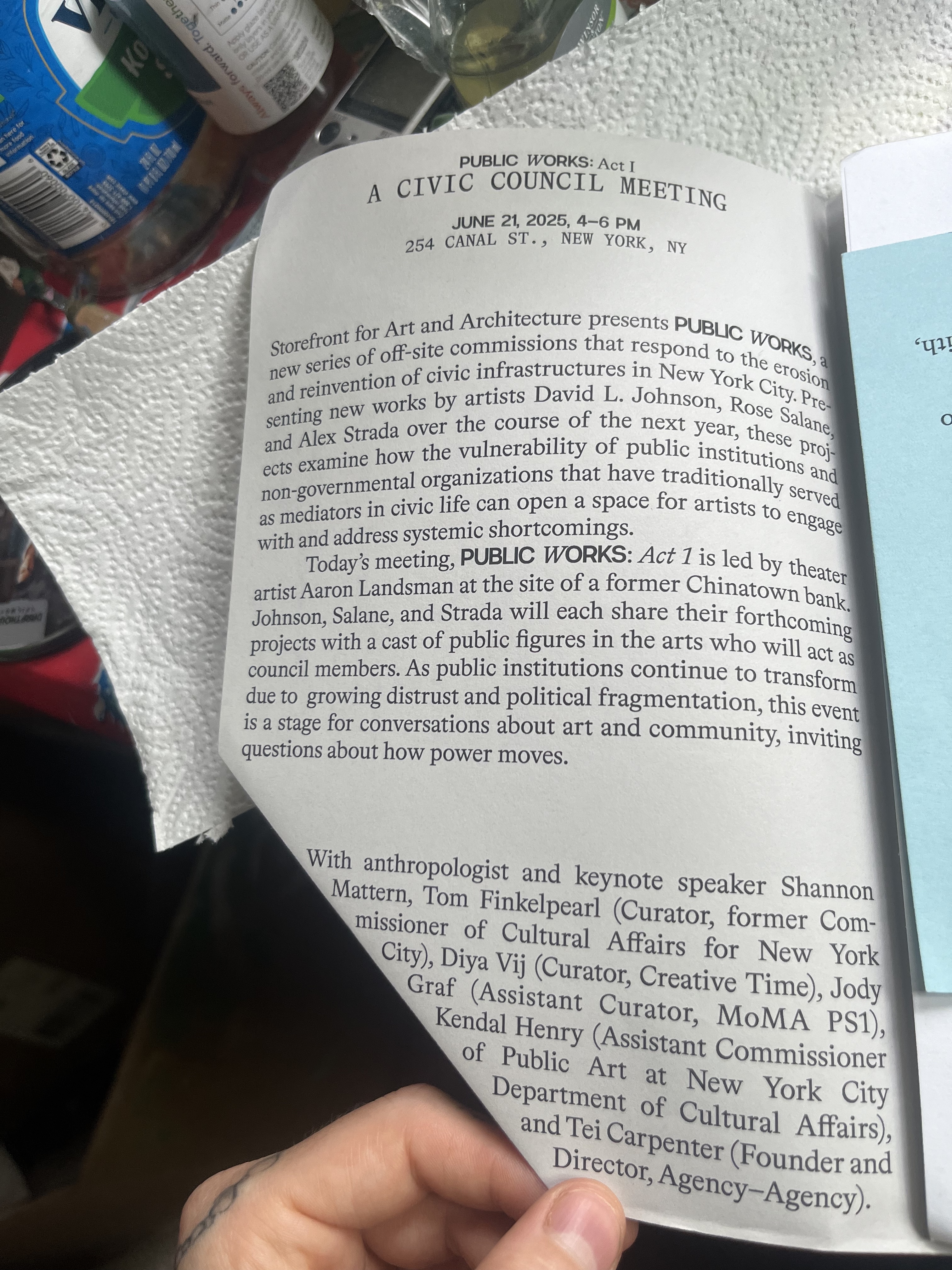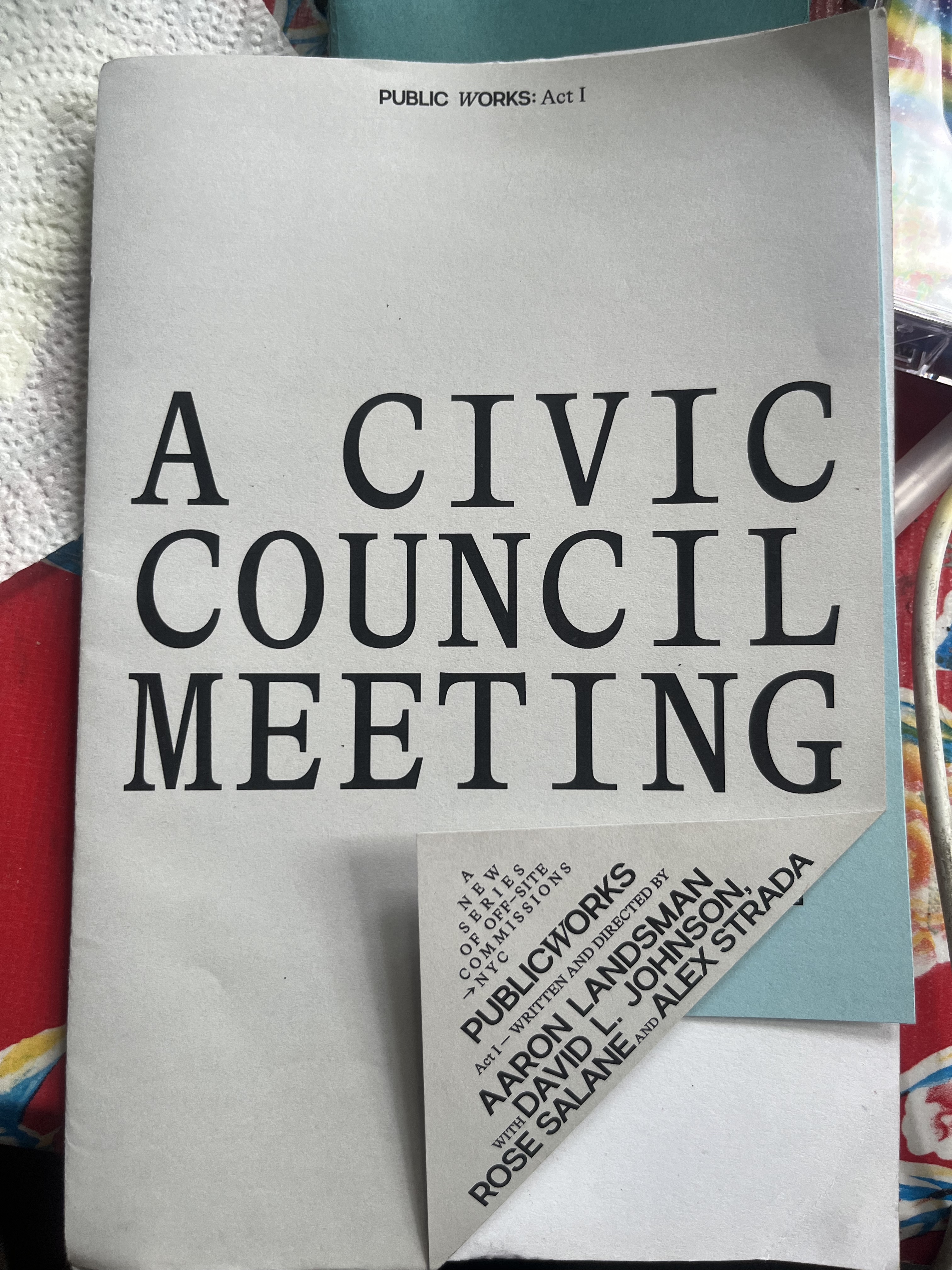mermaids, crusties, and bureaucrats
26 June 2025
Review
The Mermaid Parade, Coney Island
A punk on the subway
Public Works: Act 1, Storefront for Art and Architecture
On the Q train from Coney Island to Canal Street, a crust punk boarded. His dog with mismatched eyes took up space wherever he wanted like a good punk does. I watched the woman across from me flinch as the dog decided to rest on her sandaled feet. Of course, the punk declined to have his dog on a leash, so when he found a pleasant spot atop her feet, the punk had little interest in disciplining his companion. The woman–whether too shy to say anything, too culture shocked by our crusty friend to say anything, or too accommodating to the dog’s desires–slid her feet further and further back under the subway car’s seat.
When she left the train, the dog saddled up to the other man in the seats. I watched his face move from confusion to acceptance. I followed the tattoos on his upper arm to a plastic sack containing the plasma and ink expelled from a new piece.
The crust punk’s forearm had a stick and poke ladder on it, his jumpsuit affixed with a patch tath read “I’m here to break things.” My attention drifted back to the man with the new tattoos, what would he do now that a real stepper showed up?
But we left the train before I found out. M remarked that the punk had a beautiful face, flawless skin. The angelic crustie with the unruly dog. On the East Village subreddit, someone was shocked at the traveling kids amassing on St. Marks. They were too used to the stretches of open street bars and restaurants, not knowing how many crusties have radiant skin.
–

I’m at the Mermaid Parade unsure if the purple and pink mermaid with the Palestinian flag centered within her sprawling scales should have brought her pug to the sunny procession. His tongue flaps in the hot Coney Island air. I watch the elder DJs in their captains’ caps guide the dancing mermaids with their throbbing shanties. The East Village Mermaids strut down the street, glittering chests soaking up the June sun. A large octopus haunts the procession, sovereign might that I speak about in hurried tones. Too have the bliss of a mermaid, lost in a sea of dance and song.
I look at the puckered face of these performers, yearning for that moment undersea. A parade so much more organized than most of life past the swimming of schools of fish. Theatricality infuses life with character: the metro-card becoming fish, the 2-dollar oyster tray in the flesh, the cockroach mermaid, the gother mermaids hide under their umbrellas. All flowing in a water unnoticed.
–

In the ruins of the TD Bank, they build a new city council. One council member believes in the capacity of art and design to soften the edges of urban inequality. The library is a model for community where knowledge and resources are freely shared. The impersonal ledger of the homeless shelter is transformed into personal testimony to be displayed on street signs and in public parks. The unused real estate of the underinvested post-office might become memorials to the hard work of couriers. The archive of shoes hanging over power lines, animal sculptures, impromptu art, temporary shelters, and ripped fences compiled by bemused city employees traces the vitality of public space.
I watch artists, curators, and critics reenact a city council meeting, complete with stilted decorum, plain video feed, rigid speaking times, and faith in civic organizing. I play the role of the crank and ask during the open comment period if we’re not fetishizing bureaucracy–why not want more? I’m reminded the bureaucracy is under attack by the Trump administration, that great artists like Fluxus’s George Maciunas understood the aestheticization of the bureaucracy could open new paths for organizing, that a “fetish” carries a value judgement that might underappreciate the work done by bureaucrats in upholding and documenting collective life.

Like all good anarchists, I am naive. Let’s soften the edges of the bureaucracy to make daily life better. Or so they say. I fear the attachment to the bureaucracy is another limit on our imagination. Liberalism is infused with a faith in democratic institutions, pining for the perfection of civil discourse within accountable systems.
I flip through my photos to look at the October 10th 1968 warrant for George Maciunas’s arrest. I think about how my most frequent run-ins with bureaucrats have been the police. The cops rolled up on a show I was throwing at the trash bridge 3 weeks ago, clearing everyone from that dead end street next to the scrap processor. In that moment where the police screeched down the road to the trash bridge, I felt the fear of a vindictive bureaucracy, but I also encounter the kindness and support of friends and artists who helped me pack up all the gear, who refused to interact with the police anymore than necessary, and who reassembled for an intimate performance in my living room. I played Phillip Glass’s Metamorphosis: One, my first performance as a pianist after 8 months of lessons.
The repetitive entropy of altered states; or the repetition of euphoria in altered places.
In the archives of Maciunas held at the Museum of Modern Art, I stumbled across the ledger for his Fluxhouses–Maciunas’s illegal efforts to convert lofts in SoHo into artist coops in the 1960s. In his detailed notes, I found a July 1968 payment of $80 for “A.C. plumbing water lines” to the renowned plumber Phillip Glass.
In the space of illegality, where the rules of the bureaucrats and the police are suspended, friendship blooms. The rupture rather than the sanded edges of the state unfold the relationships that sustain us. An undated flyer for “Fluxfest presents: 12! Big Names” lists Phillip Glass performing at the same building he did the plumbing for. Was it before or after? Does it matter? Good anarchists have bad memories.
(video by Boyi Xu, @lxthlx_)